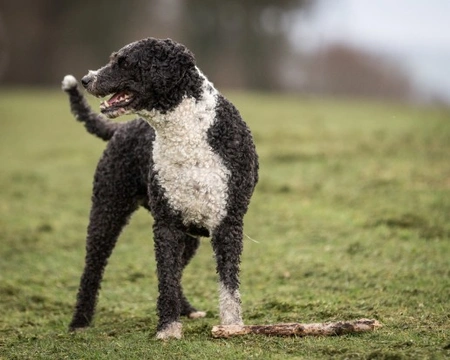
Dog breeds with dreadlocks!
When we think of dreadlocked hair, we usually think of people, but various different breeds of dogs can also grow dreadlocks, either naturally if their coats are left to its own devices, or if the coat is trained to grow in that way. This gives them a very unique and unusual appearance that you will not come across very often, but there is more than one breed of dog that can sport a dreadlocked coat!
In this article, we will introduce you to some of the breeds that you might run into that can have a dreadlocked coat. Read on to learn more!
How to dreadlocks develop?
A dreadlocked coat on the dog is referred to as cording, and while you might think that cording means that the coat is left to its own devices, it actually requires some work to get started and maintain! If improperly cared for, the coat of the dog will not form dreadlocks or cords, but will simply matt up into one solid, impenetrable mess that is very difficult to sort out, as well as uncomfortable for the dog!
Cording is the technique used to separate the coat into individual dreads or cords, and while the cords form naturally in breeds that are renowned for sporting dreadlocks, they should be maintained and cared for. Cords are usually started manually by dividing the fur into appropriately sized sections, which are tended to until the fur is long enough to maintain each cord on its own. Because cords tend to pick up dust, muck and twigs, they are actually relatively high maintenance, and should not be thought of as one of the easiest ways to keep the coat neat and in good condition!
The Hungarian Puli
The Puli is perhaps the best known of all of the dreadlocked dog breeds, and has a working history as a sheepdog in Hungary going back for over 2,000 years. The coat of the Puli does not begin to cord until the dog is around nine months old, and will stick out at right angles from the skin until it grows long enough to form the cords. The cords require weekly maintenance, to avoid them forming into matts.
The Komondor
The Komondor is another Hungarian dog with a history of herding and guarding, and they are most distinctive thanks to their white, corded coats and tall height. Like the Puli, the Komondor is apt to picking up all manner of detritus in their dreadlocks, which means that they need regular hand grooming in order to keep the coat neat.
The cords begin to develop at around nine months to a year old, and only adult dogs of the breed will display a fully corded appearance. They are relatively similar in appearance to the Puli, but while the Puli can be seen in either white, grey or black, the Komondor is always white, or off-white in colour.
The Bergamasco sheepdog
The Bergamasco sheepdog is native to Italy, and has a coat that consists of three different types of hair. The base layer of the hair is smooth and very oily, and lies flat against the skin where it forms a moisture-resistant barrier to protect and lubricate the skin. The middle layer of the hair is known as goat hair, and is coarse and thick, and the lop layer is woolly and thick.
Over time as the three layers of the coat grow, the top two layers become woven together, aided by the oils from the base layer of the fur. This forms into long dreadlocks or cords, but it can take up until the age of five years old before the coat of the Bergamasco is fully dreadlocked in all its glory! In mature dogs, the length of the cords themselves will often reach right the way to the ground.
The Spanish water dog
The Spanish water dog is a herding dog breed used for working sheep, cattle and goats, and also for assisting fishermen along the coast, and ergo, the breed is a strong swimmer! They are a single coated breed, with woolly, curly hair that can form itself into twists and cords with minimal management, and provides them with a superior, water resistant coat and layer of insulation for when they work in the water.
The poodle
The poodle may not immediately come to mind when one thinks of dog breeds with dreadlocks, but the coat of the poodle does in fact lend itself well to cording, just like the other breeds mentioned above. However, the poodle coat does not form into cords naturally like the other breeds do, and in order to achieve dreadlocks, the poodle owner will need to spend a lot of time separating and cording the coat!
The corded look was very popular during the Victorian era among poodles, but today is relatively uncommon, largely due to the time and effort involved to achieve the corded look.



